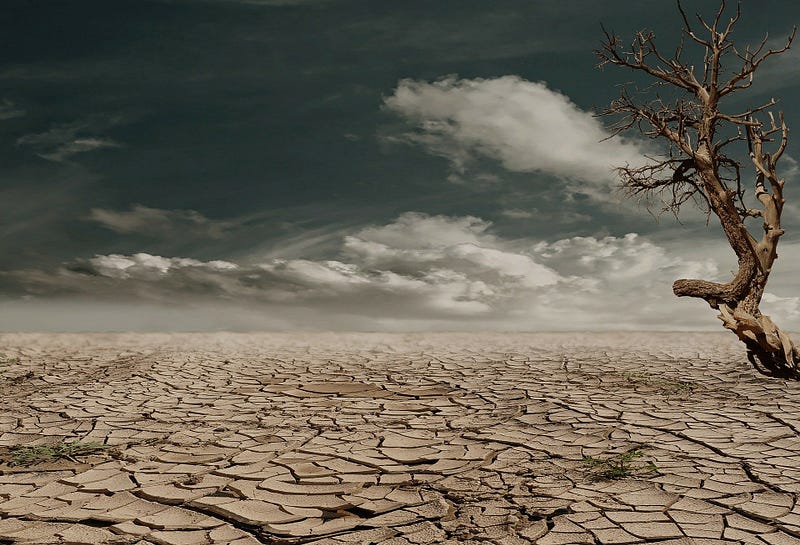Drought, fire, and floods: Focusing on those suffering from climate change now
By Gabrielle Hernandez, Biochemistry, 2022

Climate change is an impending challenge that most people think of on a daily basis. Between metal straws and reusable cups, the general population has been increasingly attempting to do what it can to save the oceans and clear the air, whereas the majority of emissions is produced by government and privately-held oil and energy companies.
It is difficult to fathom the impacts of the data that is released everyday about climate change forecasts. Modest projections for the United States place the cost in the billions, accounting for health, infrastructure, and ecosystemic impacts. Two-thirds of the world’s urban populations are threatened by rising sea levels. The city of Boston has already started to dedicate time and money to a city-wide climate change preparedness initiative in response to projections that show much of Boston’s coastlines submerged in extreme cases. As a product of rising sea levels, 630 million people worldwide are predicted to be threatened by flooding and high tides by the year 2100.
These predictions are not just a dystopian outlook on the ever-nearing future. To some of the most vulnerable populations in the world, this is happening now. Around the world, people are facing a diversity of extreme threats brought on by climate change that are pushing them out of their homes. Many island and coastal nations experience near-constant flooding and tropical storm threats.
These predictions are not just a dystopian outlook on the ever-nearing future. To some of the most vulnerable populations of the world, this is happening now.
The Middle Eastern, Latin American, and Sub-Saharan regions are among the most threatened due to populations that are highly dependent on the climate for their survival. Drought in Guatemala, El Salvador, and Honduras has contributed to instability in these regions, forcing people to migrate elsewhere to escape food shortages and increased violence. While wildfires rage on in Brazil due to both drier seasons and human-led deforestation, indigenous populations that have existed in these regions for centuries are forced out of the land by both these natural and man-made disasters. Internal migration as a result of climate change has increasingly become a crisis that lawmakers will be forced to reckon with as they play judge and jury for millions around the world seeking asylum.
Despite these current conflicts, international, federal, and state policy is falling behind in redefining what it means to be displaced by climate-related pressures. Without clear-cut policy, many people displaced by flooding and droughts are left without the international protections given to other refugees fleeing violent conflicts in their homelands. This is set to change, though.
In October, Senator Ed Markey of Massachusetts introduced legislation to reword the United States’ policy on refugees to include those displaced “for reasons of sudden or progressive change in the environment that adversely affects his or her life or living conditions.” The legislation also proposes a 10-year long strategy to deal with the progressive impacts of climate change on the American people. Although this legislation is not likely to pass the Republican-held Senate for some time, it brings attention to the fact that people displaced by climate change are not protected or supported by outdated policy.
Internal migration as a result of climate change has increasingly become a crisis that lawmakers will be forced to reckon with as they play judge and jury for millions around the world seeking asylum.
Recently, on Northeastern University’s campus, the Latin American Student Union (LASO) hosted an event called “Climate Crisis in Our Communities and What to Do About It” analyzing the humanitarian impact of climate change on Latin American populations. The members of the club discussed environmental racism — the idea that issues of climate change and environmental destruction disproportionately impact communities of color. Their presentation also emphasized how migration as a result of climate change will be a large portion of the refugees coming from the Southern border.
The Coalition Coordinator for LASO, Luis Sanchez, commented, “I think it’s important to note that soon, these refugees will come not from other countries, but within a country itself. This will expose the hypocrisy behind the term ‘illegal aliens.’”
Furthermore, on the topic of accommodating asylum-seekers, Denisa Ramseier, Vice President of External Affairs for LASO, commented, “I personally feel that while we should always try our best to lend a hand to refugees in general, we almost have a responsibility to help climate refugees as the climate crisis is global and one that the United States has continuously contributed to for years on end.” Ultimately, climate refugees who are already being affected by the warming planet will need to be accounted for as the sociopolitical challenges of Central and South America increase.
Preparing for the future is challenging and sometimes incomprehensible, but aiding those who are already losing their livelihoods to climate change should be a priority now.
Carbon Emissions by Companies (2013). DOI: 10.1007/s10584–013–0986-y
High Sea Levels and Displacement (2019). DOI: 10.1038/s41467–019–12808-z
